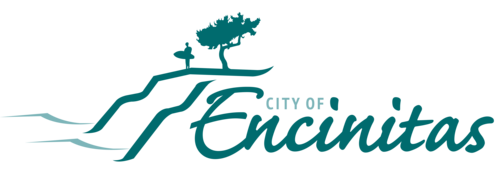Behind the Bins: A Behind-the-Scenes Look at Waste Management in Encinitas
In our daily lives, waste management often takes a backseat, hidden behind the convenience of tossing items into bins. Yet, proper waste management is crucial for environmental sustainability and community well-being. Let's take a closer look behind the bins to understand the importance of recycling, organics management, and waste reduction.
The Importance of Proper Waste Management
Effective waste management is more than just a chore; it's a responsibility. Traditional recycling reduces the strain on natural resources and minimizes pollution. Organics recycling not only diverts waste from landfills but also creates a nutrient-rich byproduct called digestate which can be used as mulch for our community, and biogas to fuel EDCO’s trucks. By reducing what goes in our trash bin, we send less to the landfill and more to facilities that can reduce our overall carbon footprint.
Behind the Bins: What Goes Where?
Blue Bin: This bin is the gateway to giving materials a second life. Paper, plastics, glass, and metals should be placed in the blue bin to be processed into new products. Recycling reduces the demand for raw materials and decreases energy consumption, making it a vital step in the circular economy.
Once items are collected from the recycling bin, they embark on a journey to be transformed into new products. They are sorted, cleaned, and processed at recycling facilities. These recycled materials are then sent to manufacturers to be used in the production of a wide range of products, from new packaging to construction materials. Paper is pulped and reformed into new sheets, plastics are melted down and molded into new shapes, glass is crushed and melted, and metals are smelted and refined. It's important to note that not all materials are recyclable in every community, and contamination can hinder the recycling process. That's why it's crucial to follow local Encinitas recycling guidelines and ensure that items are clean and free of contaminants before placing them in the recycling bin. To learn more about exactly what you can put in your recycling bin, visit the City’s recycling webpage.
Green Bin: Food scraps, yard waste, and other organic materials find their home here. Instead of rotting away in landfills and emitting harmful greenhouse gases, these items are transformed into digestate, enriching soil and powering EDCO’s trucks.
Instead of being sent to landfills where it would emit high amounts of methane, a potent greenhouse gas, organic waste is diverted to EDCO’s anaerobic digestion facility. “Anaerobic digestion (AD) is the natural process in which microorganisms break down organic materials such as food waste, green waste, kitchen generated fats, oils and greases. AD happens in closed spaces where there is no oxygen. Biogas is generated during anaerobic digestion. Biogas is mostly methane gas, which is captured, filtered, and upgraded into 100% Renewable Natural Gas (RNG) that can be used to fuel vehicles or be directly injected into gas lines for community usage, both a renewable carbon-negative fuel source. The material that is left after anaerobic digestion happens is called “digestate.” Digestate is a wet mixture that is usually separated into a solid and a liquid. Digestate is rich in nutrients and can be used as fertilizer for crops” (EDCO, 2021).
General Waste Bin: Unlike the organics or recycling bins, items that end up in this bin go to the local landfill. “Municipal solid waste landfills are the third-largest source of human-related methane emissions in the United States, accounting for approximately 14.3 percent of these emissions” (EPA.gov). Despite our best efforts, some waste items still end up here. Properly managing general waste involves minimizing its volume and ensuring hazardous materials are disposed of safely. Landfills should be the last resort, with efforts focused on reducing, reusing, and recycling wherever possible. Our waste hauler, EDCO, does their very best to send as little to the landfill as possible, but this is largely dependent on community involvement in traditional and organics recycling programs.
Tips for Improving Waste Management Practices
Educate Yourself: Learn about local blue bin and green bin recycling guidelines and to maximize your impact.
Reduce and Reuse: Cut down on single-use items and opt for reusable alternatives whenever possible.
Community Engagement: Encourage your friends, neighbors, and local businesses to properly sort and recycle traditional and organic waste and participate in other waste reduction initiatives, such as cleanup events or composting workshops.
Be Mindful: Practice conscious consumption by only purchasing what you need and choosing products with minimal packaging.
Take Action: Share Your Behind-the-Bins Experience Join us in our Zero Waste campaign to raise awareness about waste management. Participate in our community survey to provide valuable feedback and ideas for improving waste management practices in your area. Every voice counts as we work towards a more sustainable Encinitas.
Survey Link: https://bit.ly/3XvZy12
Previous Post
Clean-Powered Communities
Next Post
How to incorporate sustainability into your child's online and in school learning

